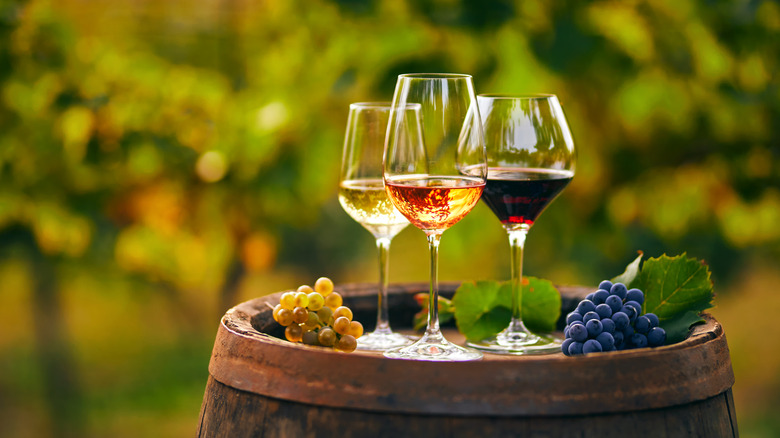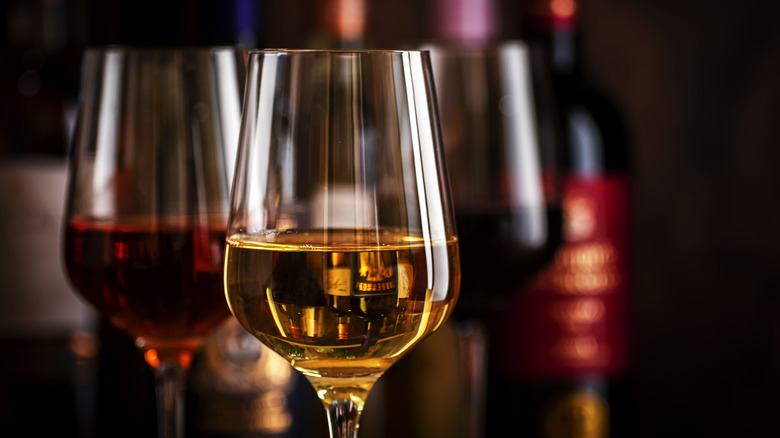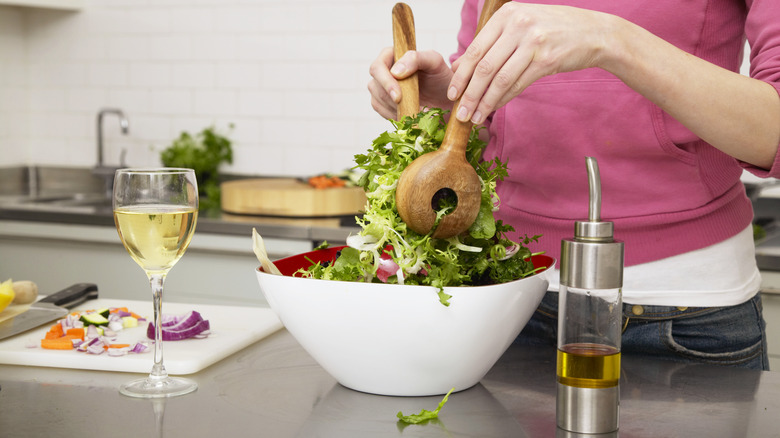Why Sugar-Free Wine Labels Are A Little Misleading
Wine labels can be a bit of a mystery, and when you put them in the context of the increasing focus on the relationship between the consumption of alcohol and our health, they're even harder to understand. Though the U.S. doesn't currently require nutritional information to appear on bottles of wine, that may be just the change needed to make it far easier to understand what you're drinking.
The Center for Science in the Public Interest has long pushed for a government requirement for nutritional information on wine bottles. This year, the Alcohol and Tobacco Tax and Trade Bureau has agreed to begin the complicated work involved with implementing mandatory labeling of nutrient and alcohol content, allergens, and ingredients on alcoholic beverages.
Until there's a standard nutritional label for wine, though, all we have to rely on is the combination of our understanding of wine and the language on the bottle — something that's often presented with an eye on marketing rather than solely informing.
What does it mean when a wine is labeled sugar-free?
The short answer is not very much. The longer answer depends on a number of factors. All wine essentially starts with sugar. Grapes are ripened on the vine to develop their natural sugars, which are converted into alcohol through the process of fermentation. When we call a wine "dry," that means all (or mostly all) of those natural sugars have been fermented out, leaving the wine with low or no residual sugar.
Basically, all it means when a wine is labeled as "sugar-free" is that it should be dry. But that's the case for many wines, and therein lies a bit of a problem, according to Wine Enthusiast, which points out that labeling a wine as sugar-free or "no sugar added" implies that some wines do contain added sugar. And yes, there are wines that are chaptalized (meaning sugar has been added), but the purpose of this process is typically to raise the alcohol content of the finished wine. Ultimately, that sugar is fermented out, leaving a dry wine... meaning that the wine in your glass isn't likely to contain significant amounts of residual sugar, even if it was chaptalized.
Is wine labeled sugar-free healthier?
The short answer is maybe. There's been a proliferation of wines that are labeled as low-calorie or sugar-free. Consumption of these wines may, in fact, be better for you, but there's a catch of sorts. Well + Good cites enology professor Federico Casassa, who explains that the bulk of the calories in a glass of wine come from alcohol rather than sugar. That means that winemakers aiming to produce low-calorie wines use grapes with lower sugar levels. Less fermentable sugar means less alcohol, and therefore, fewer calories.
If you replace one glass of full-calorie, full-alcohol wine with one glass of low-calorie wine, you may be making a healthier choice, but you may not, in fact, be reducing your consumption of sugar. And if you drink more of the low-calorie wine, you might even end up consuming more calories than you would otherwise. That's why professor Casassa says health-oriented labels like sugar-free are really little more than marketing. In the end, it's plain old common sense — backed up by guidance from the Centers for Disease Control and Prevention – that indicates drinking less alcohol is healthier than drinking more. That sugar-free label on a bottle of wine might not actually help guide you in making a healthier choice.


